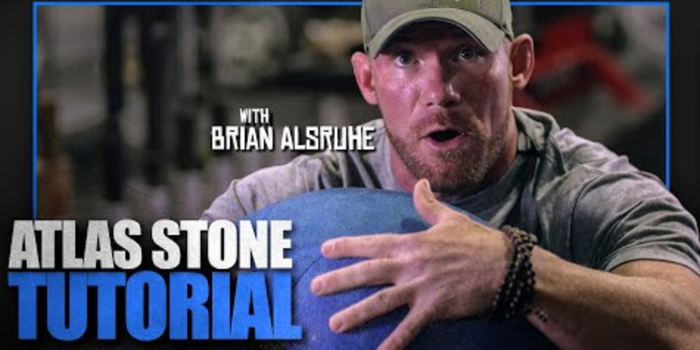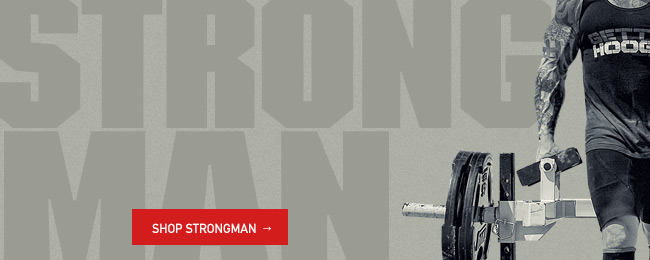
When someone says the word “strongman,” chances are the image that comes to mind is that of someone carrying a massive globe-shaped stone. The Atlas Stone is a quintessential strongman event. But even if you’re not a strongman competitor, the Atlas Stone is worth doing.
Brian Alsruhe says that the Atlas Stone’s benefits can carry over to the Big Three in powerlifting. You’ll work your upper back, traps, core strength, and more while using your lats in a completely different way.
Plus, it’s fun to train something new and different, so let’s get started.
Traditionally, stones are made of concrete. Nothing else. Just concrete. Sure, you can stick weights on them, but maybe look into Mark Bartos’ Stone of Steel. This revolutionary stone is sort of like a plastic Easter egg. You can pop the stone open and load plates inside.
You’ll probably find these stones at your specialty gym (i.e., strongman, powerlifting, CrossFit, etc.) but not the local commercial gym. If you don’t have access to a stone, invest in a heavy slam ball or a heavy packed sandbag. If you are using a sandbag, keep it as tightly packed as possible so it better mimics the stone.
Imagine that the stone is like a globe — the one your favorite geography teacher had — and find its equator. When you line up with the stone, you’ll want to line yourself up, starting with your feet, at that equator. The globe visual works best with smaller stones; unfortunately, it won’t work nearly as well (if at all) with bigger stones.
Next, take your hands and dig them right beneath the stone as hard and as deep as you can. There are a lot of variations on how you do that (like Spock or rolling the stone over your fingers and hands), but you’ll find what works best for you.
Remember the equator from earlier? You’ll want to stick your middle finger to the middle seam of your hand right along that equator line. Keeping it in the middle will prevent the stone from rolling too far in other directions.
Move your foot to the middle of the sphere. Move your hands to the middle of the sphere. Dig as deep as possible. Simple.
Take a big belly breath, brace yourself, and perform what’s going to be a Romanian Deadlift with a slightly different hinge. As you lift the stone up, move your feet inward. When the stone is passing over your knees, bring your legs in.
At this point, your biomechanical strength will allow you to sort of sit down and support the stone as you balance. That’s the moment when you decide where you want to go with the stone. Do not move the stone until you have it exactly where you want it to go — or it’ll move for you.
Instinctually, you’ll want to put your hands underneath or on the sides of the stone to bring it up. The problem is you’re kind of out of room to do that. You’re also going to hurt your biceps if you do that. Fight past that instinct. Plus, Atlas Stone events tend to include a high load — on a platform, over a bar, or up to your shoulder, so keep that in mind, too.
That said, the stone’s placement is very important, and where you put your arms is even more important. So where should you put your arms, then? Well, it’s counterintuitive to what your body wants to do, but you’ll want your arms on top of the stone. Drape them over the top as far as they can and press it into your body. Try to squeeze the life out of the stone. Row it using your lats as hard as you can.
There are several variations you can do with the Atlas Stone. You can pick it up, put it down, and repeat that pattern. You can be explosive with it and throw it over your shoulder. You can pick it up and walk with it. You can bring up the difficulty with larger stones or sandbags, so you’ll have to readjust.









